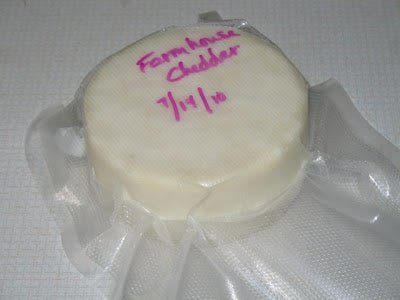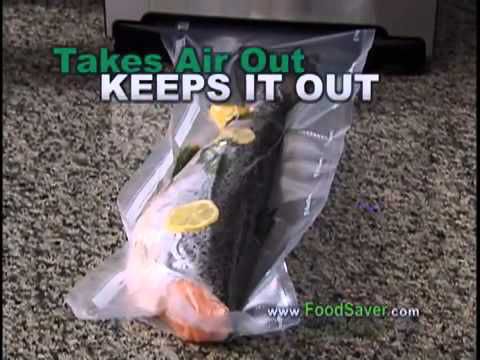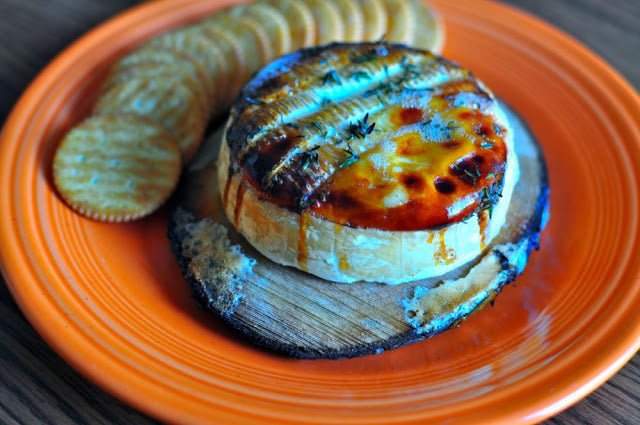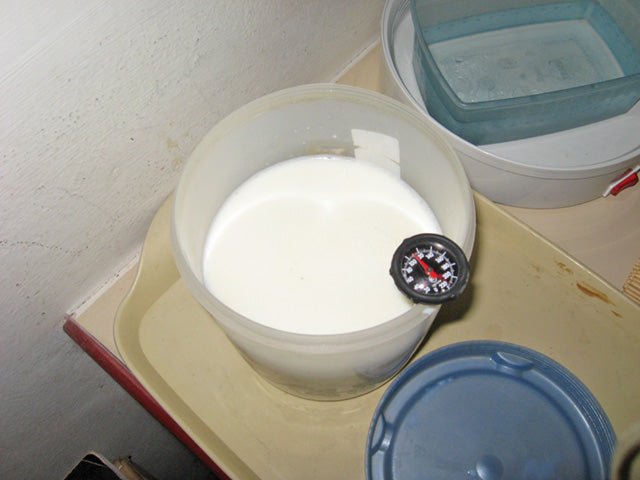 |
| Photo courtesy of Tara Tarbet at Welcome Home Farm |
It’s all about the taste!
If the only reason you aren’t making a waxed cheese is because of the waxing process, go ahead and buy that vacuum sealer. It might be the answer to your prayers. Many folks are doing it and they love it. We don’t.
It isn’t because we sell cheese wax. We know better than anyone that waxing can be bothersome, bandaging can be messy and leaving the cheese with it’s natural rinds requires ongoing attention. But,our mission is to help you, the home cheese maker, make the best cheese you can. You work hard to make it, you wait patiently for it to age and when you finally eat it, we want it to taste as good or better than the cheeses you love.
 |
| Jim Wallace and his wife, Robin |
We leave the final word on issues like this to our technical advisor, Jim Wallace (info@cheesemaking.com). (We try to be consistent with our policies, so one of us isn’t telling you one thing and another is telling you something different.) So, I asked him to explain to you why we don’t recommend vacuum packaging:
What is available to most of the home cheese making folks is not a permeable film so it is bad for aging. I am very much aware of the fact that the big boys do the film packs for aging but they use a selective permeability that works just fine for their cheese. Home cheese makers do not have access to that.
I had tried vacuum packaging myself but the results produced some pretty nasty smells and flavors (as well as textures) that were quite coarse.
I have done parallel agings (same batch but different coverings) and found that natural rinds/wax/vacuum packaging all produce different cheeses.
My other sense of using the vacuum pack has been in bringing cheese back from overseas. In the beginning, I thought I had to do this to get it into the country but I found that some pretty awesome cheeses tasted very inferior with just 5-7 days in the pack.
So, that said, here are some other arguments, both for and against vacuum packaging:
Arguments in Favor:
From a local farmer and cheese maker:
All of the large manufacturers are using this method primarily for its effective quality control and mold reduction and it is nothing new. Kathy Biss (Practical Cheesemaking) turned me to this method a decade ago and it is really marvelous and simple.
There is sufficient air within a cheese for aging and curing. Vacuum packaging large cheeses is more convenient than waxing.
Often times a waxed cheese will develop mold beneath any fault in the wax. This occurs easily with handling of cheeses during aging.
I vacuum pack large cheeses and wax individual pieces prior to sale.
Cliff Hatch, Upinngil Farm
Excerpts From the Forums:
Testimonials
I just opened a 2 year old cheddar that was vacuum sealed and it was wonderful.
Forum participant, Cheese Forum
I’ve bandaged, waxed and vacuum sealed; and here are my thoughts on the subject. … I personally prefer the vacuum sealing method – this after resisting the trying of it for a very long time because I felt that waxing was just the right way to go.
…I had a lot of cracking problems with wax, and mold formation in the cracks. I’ve had none of that with vacuum sealing … I have had no dissatisfaction in flavor, moisture or texture since going to vacuum sealing. And, I’ve not seen any cheeses with mold on them either.
…Vacuum sealing is much easier, faster, not as messy, and you can see what you’ve got at any time during the aging. Another thing is that humidity in your cave becomes a moot point if your cheeses are vacuum sealed. Nor do you have any rind to deal with.
Forum participant, Rick Robinson’s Discussion Forum
I don’t mess with wax anymore, as it never worked very well for me…mold under the wax, leaking, cracks in the wax. It just wasn’t worth all the time, effort and expense to me. I really like vacuum sealing and don’t have losses due to cutting away a lot of rind due to drying out or mold.
If you wax or vacuum seal your cheese, you don’t need to worry about controlling the humidity levels, that is necessary for natural rind cheeses.
Forum participant, Keeping a Family Cow
Suggestions for Using
I have used my vacuum sealer plenty. Something you need to remember is that you are lowering the atmospheric pressure on the cheese inside the bag. Even the best rind on the outside is holding back moister. Once you put it into the vacuum the whey on the inside is now pressurized, and is forcing itself out past the rind.
Forum participant: Cheese Forum
If you ever do vacuum pack for aging, you must keep it out of the bag for at least 2-3 hours before eating to let the cheese find equilibrium in the new environment and aerate out. If there are ammonia or similar flavors, you can also age it for a few weeks not in the bag and in a cave to let all those flavors mellow out and a little moisture evaporate.
Forum participant: Dairy Goat Forum
…it’s moisture that’s your enemy when vacuum sealing. If there’s leftover whey in the curd, any mold or other formation of undesirables on the rind, no salt balance reached in the wheel, etc, it will be a failure. … One good way of doing it is to pre-season the rind by killing off any bacteria/mold on it, either chemically or by making an inhospitable place. One good way to make the rind inhospitable is to let it sit and dry off for 3-4 weeks, eliminating the moisture bacteria need. It may be easier to use wax… just depends on your situation. I just wanted to make the point that vacuum sealing is a viable option.
The gist of how to get it to work if you want to try is to:
1) Take out of mold, put in to room at same temp and 70-80% relative humidity for 1-3 days. This is to dry the rind out a little.
2) Put into 85-90% relative humidity room at 55 and watch the rind, treating any outbreaks of mold. When a thin shell looks like it has formed all around and the surface is dry to the touch, then you can vac pack.
Forum participant: Dairy Goat Forum
Arguments Against:
Excerpts From the Forums:
I never got the hang of vacuum packing cheese. It must have been too wet or some such. They always turned into something rather gross while my waxed wheels were great. The wax still breathes. The plastic does not. I learned the hard way that I did not want to vacuum pack.
Forum participant, Dairy Goat Forum
Last fall over the course of a couple of months I made and packed five different cheeses into vacuum bags. One cheese started to grow some mold after about a month, so I opened it up and immediately noticed a rancid or sour smell. I cut off a small piece, ate it, and the result was not what I wanted. I ended up opening all the other cheeses I had packed in bags. I ended up throwing out four of the cheeses.
Forum participant, Cheese Forum
I experimented with waxing some of the cheese I made and vacuum sealing some other. I thought that the vacuum sealed cheese never developed the flavor that the waxed cheese did. It wasn’t that the vacuum sealed cheese was bad, it just was never really tasty like the waxed cheese. I thought that the vacuum sealing actually stunted the aging process in the cheese.
Forum participant, Keeping a Family Cow
… I was rolling along stocking a good amt of wheels to age in wax with no bacteriastat painted on and then someone talked me into vacuum packing right after rind formation and the entire group that I did that to went to the chickens. Too much work to risk it. It was a sorry loss. I had 5 day air dried rind after 24 hour brine soak and no trouble with waxed only the ones in plastic.
Forum participant, Dairy Goat Forum
 |
| Loleta Cheese Factory |
Summary:
As Jim explained above, the issue is permeability. Commercial cheese makers have access to permeable films, so they can make award winning cheeses. For example: Judy Schad at Capriole uses vacuum sealing as one of the steps in making her fabulous goat’s milk cheeses like Mont St. Francis and O’Banon.
The film that comes with home sealers is impermeable. The assumption is that you will be freezing meat and vegetables-not aging cheese! Cheese wax is permeable (ask anyone who has waxed a moist cheese).
There is no question that cheese will age inside a vacuum bag. The cheese itself contains enough oxygen for the process to occur. However, as cheese ages, the sugars, fats and proteins break down and combine in new ways. While they are doing that, they offload certain compounds including ammonia, acetic acid and all kinds of different volatiles. When these compounds are trapped in the cheese by an impermeable film of plastic, they have an effect on the taste of the cheese.
You may love that taste! If so, you’re all set.




















































































































































